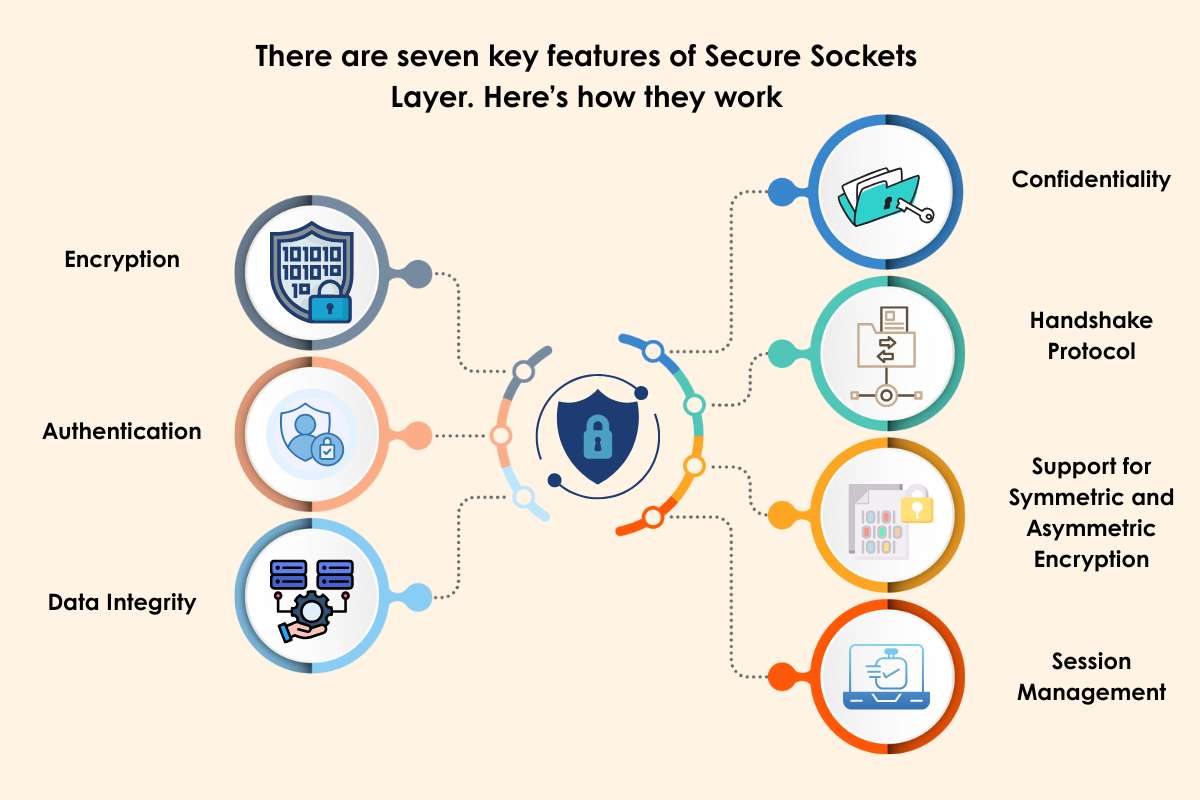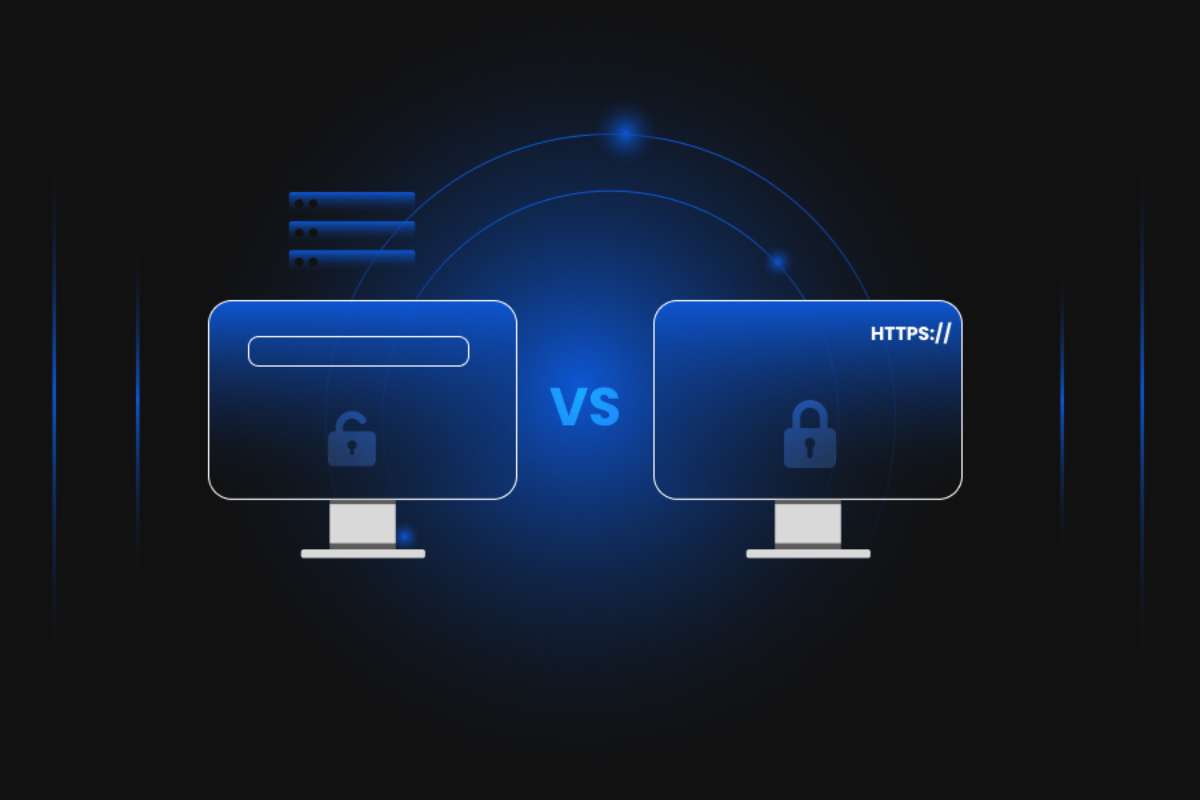The internet was once seen as a limitless space, a place where anyone could learn, connect, and do business from anywhere in the world. But behind that freedom lies a hidden danger. Every day, hackers, viruses, and digital thieves try to sneak into our devices and steal private information.
To keep people safe online, a technology called Secure Sockets Layer (SSL) was created. It’s what puts the small “lock” symbol next to a website address, a sign that your connection is safe and private. For years, SSL has been the foundation of secure online shopping, banking, and communication.
But as cybercriminals get smarter and their methods more advanced, a new question has emerged — is Secure Sockets Layer still strong enough to protect us today? Or has it become a part of internet history, replaced by newer, stronger shields?
In this article, we’ll take a closer look at Secure Sockets Layer, how it works, and whether it can still keep your data safe in a world that’s more connected and more vulnerable than ever before.
What Core Features Make SSL a Trusted Standard for Security?
A quote by Bruce Schneier, Cryptographer and Security Technologist, explains the importance of SSL pretty well. He said, “Encryption is not a luxury—it’s a public necessity in a digital democracy.”
And SSL is the foundation tech for this encryption.
Developed by Netscape in 1995, Secure Sockets Layer was the original standard for secure communication, but has since been succeeded by the more secure TLS (Transport Layer Security). However, the term “SSL” is still widely used to refer to these secure communications.
NIST (National Institute of Standards and Technology) defines Secure Sockets Layer as, “A security protocol providing privacy and data integrity between two communicating applications. The protocol is composed of two layers.”
Think of Secure Sockets Layer as a technology that protects the data as it travels from your computer to a website. Essentially, it scrambles (encrypts) the data you send so that no one else can read it—only the website you are visiting can understand the information.
Features of Secure Sockets Layer:

1. Encryption:
SSL encrypts the data transmitted between a client and a server. The protocol makes it unreadable to anyone who intercepts it. This protects sensitive information like passwords, payment details, and personal data.
2. Authentication:
SSL verifies the identities of the communicating parties using digital certificates. This ensures that users are connected to legitimate servers and not imposters.
3. Data Integrity:
SSL uses mechanisms like Message Authentication Codes (MACs) to ensure that data is not altered during transmission. If any data is tampered with, SSL will detect it and alert the parties involved.
4. Confidentiality:
By combining encryption and authentication, SSL keeps communications private so only the intended recipient can read the data.
5. Handshake Protocol:
SSL uses a handshake process to initiate secure sessions. During this process, the client and server agree on encryption algorithms and verify certificates before transmitting actual data.
6. Support for Symmetric and Asymmetric Encryption:
SSL uses asymmetric encryption for secure key exchange and symmetric encryption for fast, secure data transfer.
7. Session Management:
Secure Sockets Layer supports session resumption and renegotiation mechanisms to improve performance and adapt to changing security needs during long or repeated connections.
All of these features work together to create a secure and reliable environment for web transactions.
Types Explained: What’s the Difference between Validation and Coverage?

Secure Sockets Layer is categorized by validation level and the number of domains/subdomains they secure. And both of these categories have types in them.
Let’s take a look at each of them individually, shall we?
1. Types of SSL by Validation Level
Now there are three types of SSL by validation level. Here’s how they work:
Type 1: Domain Validation (DV):
Quick and basic validation—only the domain ownership is verified. This type of SSL is most cost-effective and suitable for blogs and informational sites.
Type 2: Organization Validation (OV):
Moderate validation—checks business identity as well as domain ownership. This type is suitable for business and organizational websites.
Type 3: Extended Validation (EV):
Rigorous validation—full vetting of the organization, shown with a prominent site seal or business name in the browser. This type of SSL is ideal for e-commerce and sites requiring the highest trust.
But that’s not all the types! Let’s talk about the second category of Secure Sockets Layer—Types by domain coverage.
2. Types of SSL by Coverage
Now this category is divided into four types. Here’s what they are:
Type 1: Single Domain:
Protects one specific domain (example.com).
Type 2: Multi-Domain (MDC/SAN):
Secures multiple domains and subdomains with a single certificate (e.g., example.com, example.net, mysite.org).
Type 3: Unified Communications Certificate (UCC):
A type of multi-domain certificate, commonly used for Microsoft Exchange/Office servers. This SSL secures several domains or services under one certificate.
Type 4: Wildcard:
Secures a domain and all its subdomains (e.g., *.example.com covers blog.example.com, mail.example.com).
The Core Uses of SSL That Define Internet Security Today

1. Secure Web Browsing (HTTPS):
The most recognizable use—Secure Sockets Layer secures websites by encrypting data exchanged between browsers and servers. Secure Sockets Layer is designed to protect sensitive data like passwords and payment information.
2. Email Security:
Secure Sockets Layer secures email protocols (like SMTPS and IMAPS). SSL ensures email contents and credentials can’t be easily intercepted during transmission.
3. File Transfer:
Used in FTPS (File Transfer Protocol Secure) to protect files sent between clients and servers with encryption.
4. Virtual Private Networks (VPN):
SSL is a component in some VPNs. They establish secure tunnels for private data transfer over public networks.
5. API Security:
SSL is widely used to encrypt RESTful API connections. The protocol secures data exchange for software and mobile apps.
6. Online Banking and E-commerce:
Protects online banking sessions and financial transactions. They make sure user credentials and financial details remain private.
7. Cloud Services:
SSL secures communications with cloud resources, such as storage, databases, and SaaS platforms.
8. IoT Device Communication:
Ensures safe communication between IoT devices and servers by encrypting transmitted data.
9. Remote Desktop and Messaging:
SSL secures remote desktop sessions (RDP over TLS), chat, and messaging services. They protect conversations from interception.
10. Authentication and Digital Certificates:
Used to verify website and user identities through digital certificates, supporting trusted interactions.
Benefits and Drawbacks of Secure Sockets Layer
Here’s a detailed look at the drawbacks and benefits of Secure Sockets Layer in every aspect of its use case:
| Aspect | Benefits of SSL | Drawbacks of SSL |
|---|---|---|
| Data Protection | Encrypts data during transmission, making it unreadable to hackers and protecting sensitive information like passwords and credit card details. | Adds computational load due to encryption and decryption, slightly slowing down website performance. |
| Authentication | Verifies website identity through digital certificates, ensuring users communicate with legitimate sites and reducing fraud or phishing risks. | Requires proper setup and renewal; errors or expired certificates can cause trust warnings. |
| User Trust | HTTPS and padlock icons increase user confidence, improving engagement and conversions. | Misconfigured SSL can display security warnings, reducing user trust instead. |
| SEO Ranking | HTTPS websites gain priority in search engine rankings, improving visibility and traffic. | No direct SEO penalty for non-HTTPS sites, but the advantage is limited if competitors also use SSL. |
| Regulatory Compliance | Meets standards like PCI-DSS for payment and data protection, allowing secure online transactions. | Premium certificates (OV, EV) can be expensive and need ongoing management. |
| Security Protection | Prevents data interception, eavesdropping, man-in-the-middle attacks, and identity theft. | SSL only protects data in transit — not against malware, phishing, or server-side vulnerabilities. |
Tools for Secure Sockets Layer management
There are many Secure Sockets Layer management tools in the market. Here are the ones most popular among developers and users.
Let’s go through each of them one by one:
1. DigiCert CertCentral:
Comprehensive platform for managing SSL/TLS certificates across web servers, email, and software. It supports automated issuance, renewal, and discovery. It also has integrations with multiple IT and security tools.
2. Sectigo Certificate Manager:
A universal certificate lifecycle management platform supporting both public and private certificates. This tool provides automated discovery, provisioning, and management with extensive integration options.
3. Keyfactor Command:
Enterprise-grade tool for automating PKI and certificate management with real-time visibility. It also features automated renewals, compliance reporting, and integration with SIEM and ITSM systems.
4. ManageEngine Key Manager Plus:
Web-based tool for managing SSL certificates and SSH keys. This tool offers features for discovery, inventory, deployment, and encryption of certificates with compliance adherence.
5. SecureW2 JoinNow Connector PKI:
Certificate management focused on network security, passwordless authentication, and policy-driven authentication using RADIUS server certificates.
Using these tools helps organizations maintain robust SSL/TLS security with minimal manual effort and reduces the risk of certificate-related outages or breaches.
What’s the difference between SSL and TLS?
Now, by this point, you have heard “TLS” quite a few times. So what is it? Is it a synonym for SSL? Well, yes and no. Let’s understand!
To explain in the simplest terms, SSL is the old version, and TLS is the current, modern, updated safety protocol. TLS stands for Transport Layer Security. It is the successor of Secure Sockets Layer.
TLS addresses multiple security vulnerabilities found in SSL. It provides stronger encryption algorithms, better authentication, and improved key exchange methods. SSL is considered outdated and insecure, while TLS is the current industry standard.
SSL versions ended at 3.0, while TLS started from 1.0 and has evolved to versions like TLS 1.3 with ongoing improvements. Secure Sockets Layer uses older algorithms (e.g., MD5, RC4), which are weak by modern standards. TLS uses advanced algorithms such as AES and ChaCha20, providing better resistance to attacks.
And those are the key differences between the two.
Also Read: What is Transport Layer Security (TLS), and Why is it Important?
SSL Guidelines to keep in mind when Implementing them.
Here are the key official SSL/TLS guidelines drawn largely from U.S. government recommendations and industry standards:
1. Use Strong Protocols:
TLS versions 1.2 and 1.3 are mandatory. SSL 2.0 and SSL 3.0 are deprecated and must not be used due to known vulnerabilities.
2. Certificate Validation:
Certificates must be issued by trusted Certificate Authorities that follow strict validation rules, including domain validation and organization identity verification where applicable.
3. Certificate Lifetimes:
Limit certificate validity periods to reduce risk. Industry standards currently limit certificates to a maximum of 398 days, with a future goal to shorten this to 47 days.
4. Complete Certificate Chain:
Ensure servers present a complete certificate chain, including all intermediate certificates, to enable proper client trust validation.
5. Strong Cryptography:
Use secure key lengths (2048-bit RSA minimum, or equivalent ECC keys) and avoid weak or vulnerable cipher suites.
6. HSTS (HTTP Strict Transport Security):
Implement HSTS headers to enforce HTTPS connections and prevent protocol downgrade attacks.
7. Regular Audits:
Certificate Authorities must undergo regular, independent audits to confirm compliance with security policies.
8. Certificate Renewal & Revocation:
Monitor certificates for renewal before expiry and promptly revoke compromised certificates.
9. Security Configuration:
Disable weak protocols and ciphers on servers, enable forward secrecy, and keep server software up to date.
Future Outlook of the SSL Certificate Market
The SSL Certificate Market, according to Coherent Market Insights, in 2025, is valued at approximately USD 234.5 million and is forecasted to grow to USD 518.4 million by 2032.
According to Mordor Intelligence in 2025, the market is valued at around USD 208.68 million and is projected to grow to USD 359.40 million by 2030. It has registered an 11.49% compound annual growth rate (CAGR).
This growth is driven by several factors, including increasing digital security needs, regulatory compliance requirements, and the shift toward automation in certificate management. This automation is necessary because browser vendors now mandate shorter TLS certificate lifetimes to reduce security risks.
The COVID-19 pandemic has accelerated digital transformation and boosted e-commerce and remote work. The pandemic has further intensified demand for Secure Sockets Layer certificates for secure online transactions.
But the market does have its share of challenges. Challenges include competition from free or low-cost security alternatives and the complexity of installing and maintaining SSL certificates, especially for small businesses.
Nonetheless, shifts toward advanced authentication like Extended Validation (EV) SSL certificates and technological improvements simplifying SSL management are opening new opportunities for market expansion.
Conclusion:
So, to answer the question that we asked at the start of the blog, is Secure Sockets Layer as secure as it used to be? With the birth of TLS, it seems the opposite. Most websites and companies are shifting to TLS for a safer and more secure protocol. And it is only wise to follow their suit. But then what’s the importance of SSL?
Secure Sockets Layer is an important foundational system for the internet’s stability. Having this knowledge is essential for understanding how encryption works, what HTTPS does, and, in the end, helps you understand how to identify cyber threats.
FAQs
1. What are the key risks of not having SSL/TLS encryption?
Without it, data is vulnerable to interception and theft. Browsers will flag the site as “Not Secure.” This flagging will significantly damage user trust, credibility, and search engine ranking.
2. How can I check if my website’s SSL/TLS certificate is working?
Check for the padlock icon and ‘https://’ in your browser’s address bar. For a detailed report, you can use free online tools like an SSL Checker or SSL Labs Test.
3. Why is an SSL/TLS Certificate essential for a website?
Secure Sockets Layer certificate encrypts data between the server and the user’s browser (HTTPS). It helps in protecting sensitive information like login details, building user trust, boosting SEO, and preventing “Not Secure” browser warnings.






